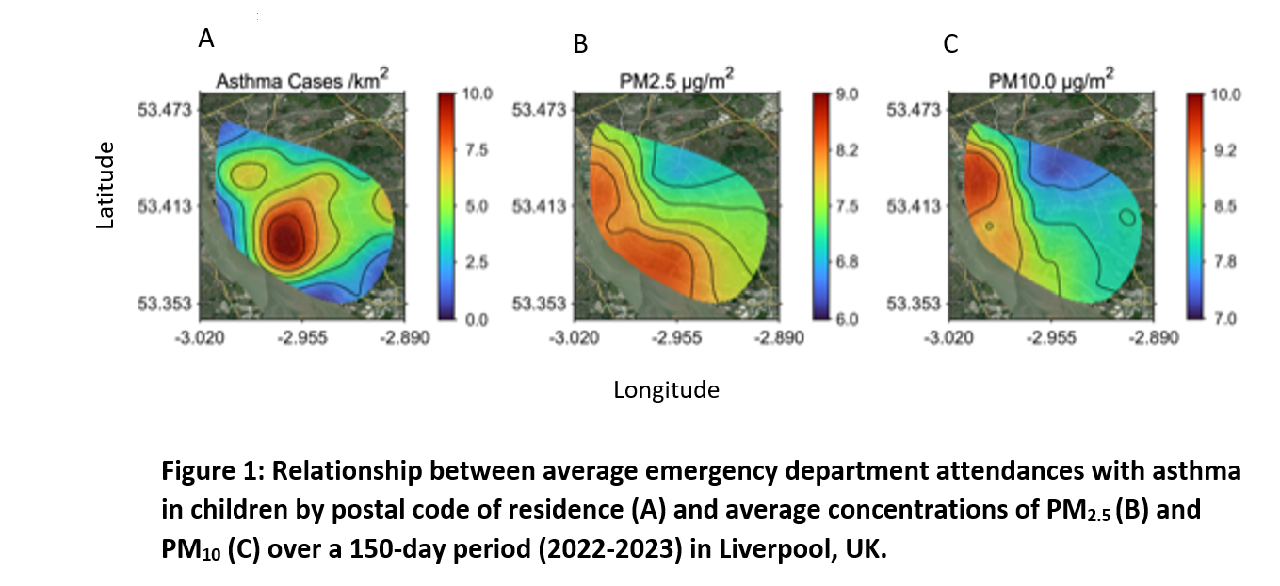Abstract
Background: Current evidence linking ambient PM concentrations and paediatric asthma ED visits is based on varying methodologies, often using modelled data. In 2019, modelled government data showed that Liverpool (UK) exceeded the WHO recommended limit for PM in every local authority. Liverpool persistently experiences higher than national average paediatric hospitalisation for asthma.
Aim: To identify children in Liverpool at risk of pollution driven asthma attacks by linking real time business intelligence data for ED visits and city-wide PM sensor data.
Methods: The University of Liverpool's air quality network is equipped with 37 optical particle counters to measure PM concentrations city-wide, hourly. Accuracy is ensured by calibration against reference stations and a machine learning algorithm is employed to generate contour plots. The same methodology is applied to interpolate data on asthma ED visits (ICD-10 codes and post code of residence), analysed using the gliding box algorithm to determine the density of ED visits.
Results: We present data for a 150-day period (Figure 1). There is a clear relationship between average PM concentrations around a child?s residence and ED visits with asthma. 
Discussion: Ongoing work includes interrogation of temporal and spatial relationships and linking to prescribing data to further elucidate associations between PM concentrations and asthma morbidity.